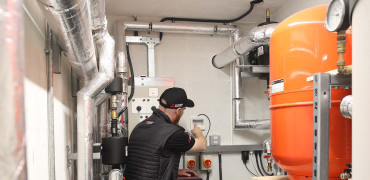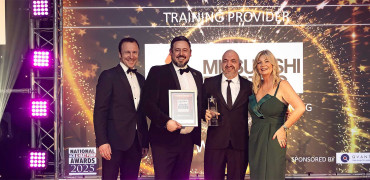I was asked to appear in a podcast recently with Martin Hurn, the Event Director of Futurebuild, as part of a series looking at the challenges of commercial HVAC retrofitting.
The whole idea of the Futurebuild podcast is to connect ideas, people and solutions to help shape a better built environment, and this episode was part of a special retrofit series exploring how to decarbonise the buildings that have already been built, not just the ones we're building in the future.
In the discussion with Martin, I speak about one of the biggest challenges facing us – moving commercial buildings away from fossil fuels and embracing air source heat pumps (ASHP) as a proven, practical solution.
Not only is this the right thing to do to protect against climate change, but I also believe that it offers our industry a way of future-proofing jobs.
I’ve been involved from the start and it all began with us trying to solve a problem
Real world lessons
In the podcast, I explore the design, operational challenges and opportunities that come with switching from gas to ASHP, and our role as a heat pump manufacturer in guiding projects from concept to real world delivery.
I look at lessons learnt from standout case studies, including Bournemouth University's Retrofit of Dorset House, where the Forensic Toxicology and Microscopy labs, along with the Business School are based.
I also talk about our inspiring collaboration with Chester Zoo, where heat pumps are now helping endangered rhinos and other wildlife stay warm.
What a journey
But I start off explaining how, having been at Mitsubishi Electric for over 20 years, I’ve been involved right from the start of our heat pump journey and how it all began with us trying to solve a problem.
A large gym chain realised that they had a lot of excess energy from cooling their gyms for their customers and asked us if this energy could be recovered to use for hot water for the showers.
An air conditioning system is all about transferring heat energy from one area to another so after playing with some ideas, we worked out a way to deliver exactly what the customer wanted.
And once we had got started looking at the area of heating water well, the rest as they say is history.
After beginning with commercial heat pumps, we then looked at the domestic market with the creation of our Award-winning Ecodan range, which has gone from strength to strength and now includes a high-temperature R290 version.
After the acquisition of Climaventa and its heat pump chiller range, we came back to doing bigger commercial projects again, so that we can confidently say that we have the biggest and widest range of heat pumps available in the UK.
A time for training
My role within Mitsubishi Electric has kind of followed along that same line and I then got involved in training our customers and our staff as well.
On the air conditioning side, we train installers, main contractors and even get involved with consultants, so it's all the way up and down the world of HVAC.
On the heating side, sometimes we deal with air conditioning engineers who are changing over to do some of the heating side. But I'm also dealing with heating engineers who are changing over from gas boilers to what they still call ‘this new technology’.
However, this isn't new at all, but it's interesting that that is how it's still perceived by some in the industry, when the idea of producing hot water from a refrigeration circuit came about a good 50 or 60 years ago.
What is new though is how we train people and one of the things we’ve added in recent years has been the use of virtual reality headsets to allow engineers to see and ‘get inside’ our equipment.
This means they can tackle real issues with equipment in a safe, ‘virtual’ environment. It has also proved a real draw when we visit recruitment fairs and schools as we are then talking to tomorrow’s engineers in a way they are quick top embrace.
Myth busting
In training though, some of the first challenges we face when we talk to engineers is perception and some of the myths that still persist around heat pumps, despite the fact that they are now well proven and can offer high water temperatures that more than match gas.
Heat pumps are ready to become the dominant form of heating, whether for our homes or in a commercial building.
What is more important though is designing heating and cooling so that you can use the smallest system possible and consume the least amount of energy required to not only reduce the carbon footprint but also help keep energy bills down.
There’s a whole lot more we talk about on the podcast so if you’ve half an hour or so to spare, why not listen along? (It’s Episode 23 – Fram gas to green: Heat pumps at scale)
And of course, please come along and book a training course if you would like to know more.
Ben Bartle-Ross is a technical trainer at Mitsubishi Electric




